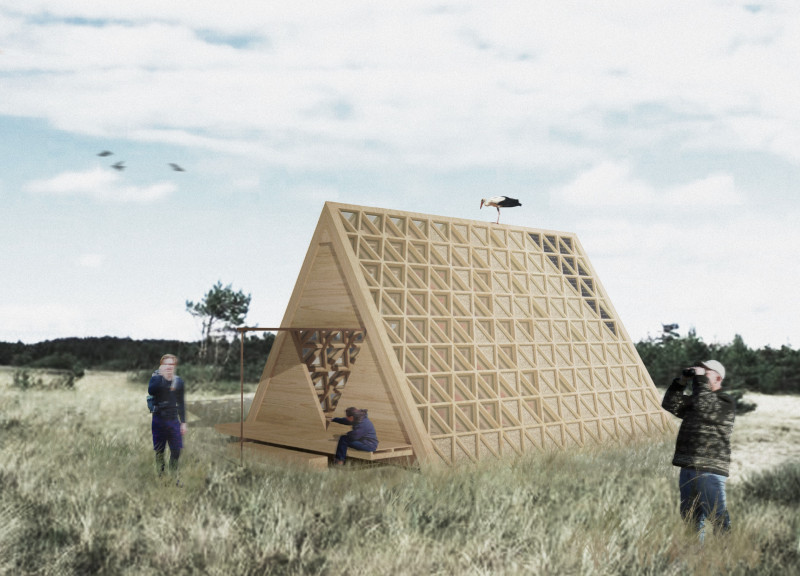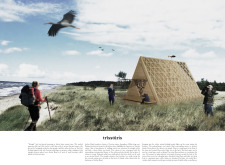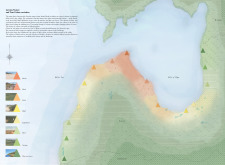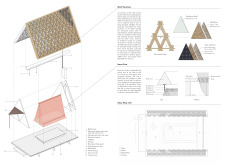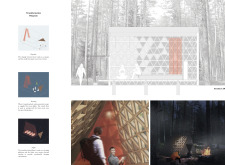5 key facts about this project
The cabin’s design employs a range of materials that reflect both sustainability and the needs of modern users. The main structure utilizes a pine timber frame, which provides robust support while connecting the architecture to the surrounding forest environment. Enhancing the visibility of the natural daylight inside, polycarbonate panels are integrated into the design. This choice allows for natural light to permeate the interior spaces, creating a warm and inviting atmosphere while also maintaining weather resistance. Solid fiber panels are used for their excellent insulating properties, benefiting the overall energy efficiency of the cabin.
One of the remarkable aspects of "Trīsstūris" is its functionality across different times of day and types of use. During daylight hours, the front triangular entrance serves as a sheltered canopy, creating a conducive space for outdoor engagement. In the evenings, the cabin transforms into a social hub where stored solar energy illuminates the interior, inviting guests to enjoy meals and conversation in a communal setting. At night, the architecture provides a cozy sleeping environment, ensuring comfort through both its design and carefully selected materials.
In terms of unique design approaches, the project considers the seasonal variations of the climate and the practical needs of its users. The cabin is raised off the ground, which aids in water drainage during rainfall and provides a buffer against the cooler temperatures of the Latvian winters. This elevated design not only enhances functionality but also fosters a greater appreciation for the surrounding ecology, allowing visitors to feel more connected to their environment.
The color palette of “Trīsstūris” is reflective of the coastal landscape, with hues that mimic the natural surroundings. This design choice fosters a seamless integration of the structure within its environment, allowing it to stand as part of the landscape rather than apart from it. The triangular form emphasizes a clear visual language while providing a multitude of perspectives that invite exploration.
The thoughtful attention to social dynamics is also a critical component of the project. Various communal areas are created both within and around the cabin, promoting interaction and shared experiences among visitors. This reflects a contemporary understanding of the role architecture plays in fostering community connections while respecting traditional values.
Readers interested in a deeper understanding of the project are encouraged to explore its presentation further. Architectural plans, sections, and detailed designs will provide more insights into the thoughtful choices made during the development of "Trīsstūris." By examining the architectural ideas at play, one can appreciate the significance of this project in contemporary Latvian architecture.


